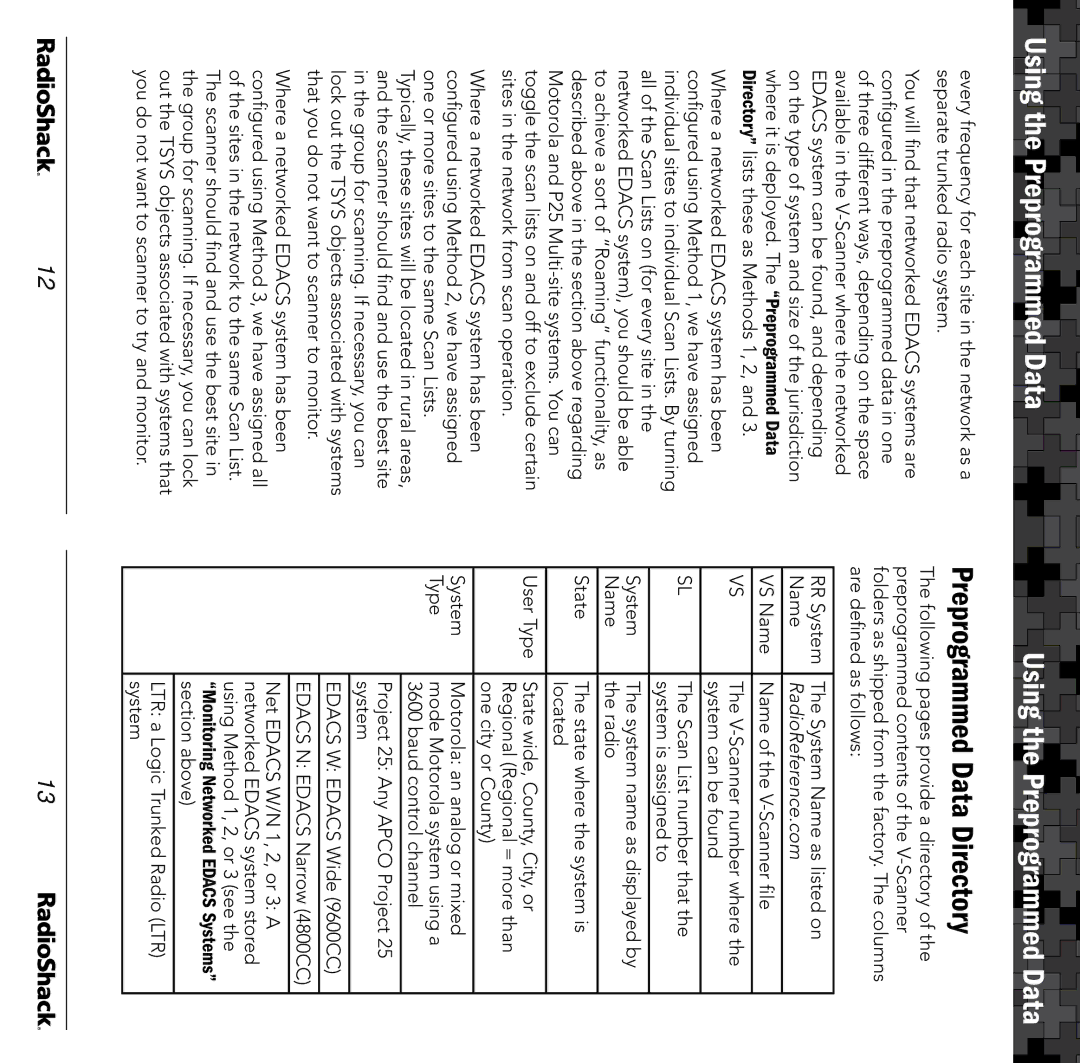20-106, 20-197 specifications
Radio Shack, a name synonymous with electronics retail, has long been celebrated for offering a wide range of products catering to both amateur and professional enthusiasts. Among its notable offerings are the Radio Shack 20-197 and 20-106 models, two distinct multimeters that provide outstanding functionality for both basic and advanced electrical measurements.The Radio Shack 20-197 is a digital multimeter renowned for its reliability and user-friendliness. This model incorporates a robust set of features ideal for both novice hobbyists and experienced technicians alike. With an easy-to-read LCD display, the 20-197 can measure AC and DC voltage, current, resistance, and continuity. This versatility is complemented by its ability to test diodes, ensuring users can tackle a wide array of tasks with one compact device. Additionally, the multimeter is designed with a protective casing to prevent accidental drops or damage, making it an excellent choice for on-the-go evaluations in various environments.
On the other hand, the Radio Shack 20-106 model caters more specifically to the needs of electronics enthusiasts. One of its standout features is the temperature measurement capability, which broadens the range of potential applications, allowing users to monitor circuit temperatures directly. Like the 20-197, it also measures voltage, current, and resistance, but with heightened accuracy and additional precision settings that professionals may find essential for more intricate projects. The 20-106’s clear and intuitive interface simplifies the measurement process, making it accessible even for those less familiar with electronic diagnostics.
Both multimeters utilize advanced technologies to ensure accuracy and durability. They are equipped with automatic ranging, which eliminates the need for manual adjustment, streamlining the measuring process. The battery-saving features in both models, such as automatic shut-off, also enhance usability, prolonging battery life during periods of inactivity.
In summary, the Radio Shack 20-197 and 20-106 multimeters exemplify quality and functionality in electronic measurement tools. With their extensive features, user-friendly designs, and advanced technologies, these models continue to serve both amateur hobbyists and dedicated professionals looking to simplify their electronic evaluation tasks. Whether measuring voltage levels, assessing circuit temperatures, or testing components, these multimeters make an invaluable addition to any toolbox.

